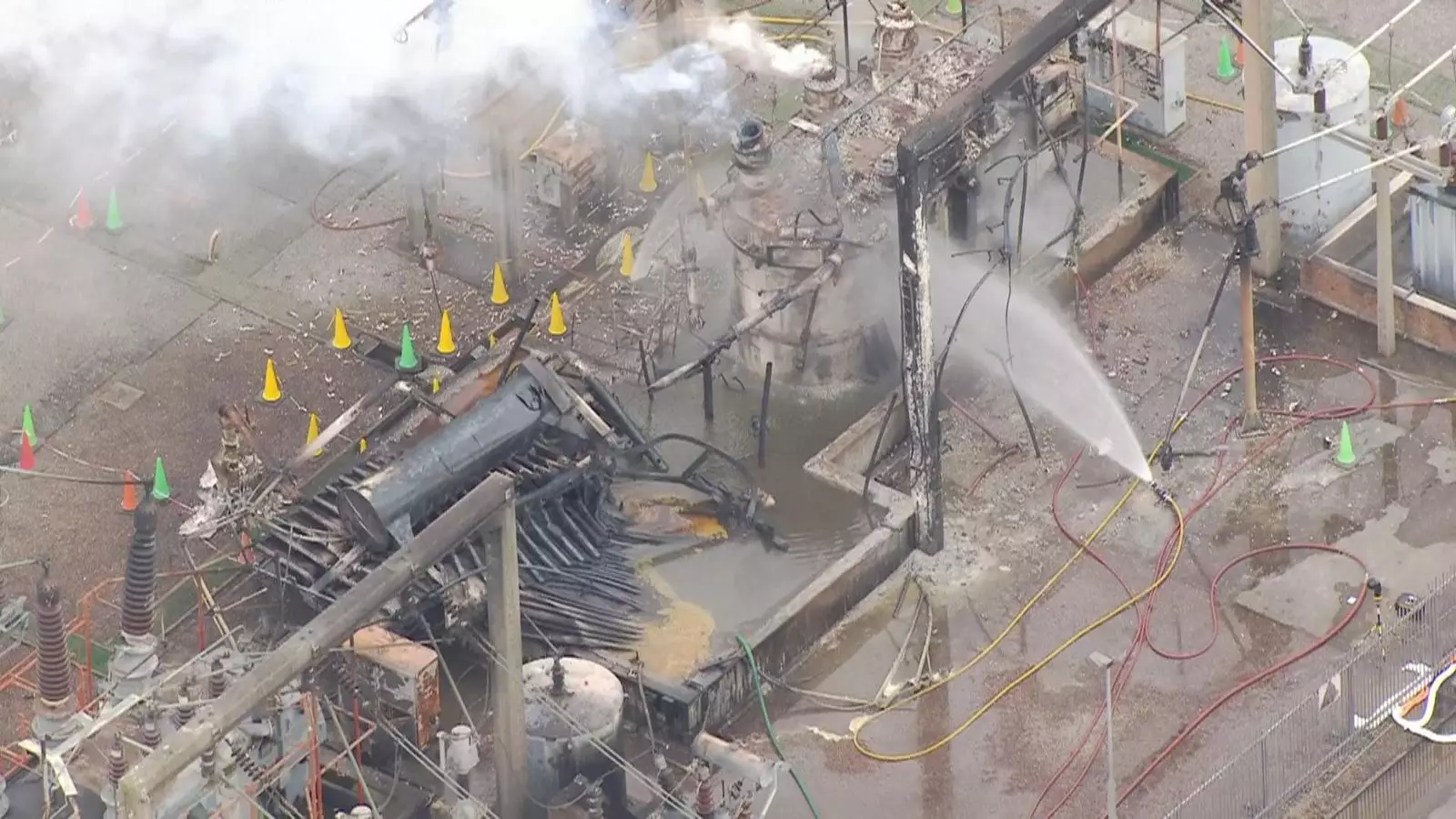The recent power outage that crippled Heathrow Airport and affected approximately 1,300 flights reveals a shocking vulnerability in the infrastructure of one of the world’s busiest transport hubs. When National Grid’s chief executive, John Pettigrew, claimed there were alternative substations poised to provide electricity, it painted a picture of resilience. Yet, this confident assertion clashed starkly with the palpable chaos that ensued when the electric lifeline faltered. The complex interplay between the firm assurances of utility executives and the human realities of airport operations shows that, beneath the surface, systemic weaknesses are often left unexamined.
Heathrow’s predicament serves as a testament to the precarious nature of modern logistics and service delivery. While Pettigrew stated there was “no lack of capacity” from alternative substations, the airport’s slow recovery begs the question: why was the backup infrastructure not enough to prevent operational gridlock? When systems are interconnected yet remain critically dependent on singular components, the potential for failure exponentially increases. The event swiftly metamorphosed into a logistical nightmare, amplifying calls for a reevaluation of what constitutes resiliency in essential services.
The Inadequacy of an Outdated Framework
Interestingly, an earlier report from consultancy firm Jacobs, issued over a decade ago, identified pressing weaknesses in Heathrow’s electrical supply framework. It warned concisely that outages could trigger catastrophic disruptions that could cost the airport dearly. Fast forward to the present, and we find ourselves at a grim crossroads where past advisories were evidently left unheeded. The airport may have appeared operationally sound, but the underlying infrastructure was a ticking time bomb.
This incident should serve as a clarion call for airport authorities and policymakers alike. A decade is ample time for proactive measures to be taken to bolster older systems, yet it appears complacency seeped in. Instead of addressing identified vulnerabilities, it seems that a focus on immediate profit and throughput metrics overshadowed the hard work of ensuring a fault-tolerant operational model. The chaos that ensued saw upwards of 200,000 passengers left disoriented and stranded, all because we failed to heed the warnings that were echoing ‘in the red’ long before this crisis.
The Human Element: Challenges of Safe Recovery
In the wake of the disruption, Heathrow’s operational teams were required to execute complex procedures to safely shut down and restart essential services. Thomas Woldbye, the airport’s chief executive, highlighted the intricacies involved in ensuring safety when power was restored. This speaks volumes about how infrastructure failures create cascading effects that affect human lives and experiences. Rather than merely correcting a mechanical failure, staff were tasked with restoring dozens of critical systems, highlighting how such situations can spiral into humanitarian challenges, not just logistical ones.
It’s vital to underscore that the human factor in disaster recovery is often neglected in strategic discussions about infrastructure resilience. The challenge lies not merely in possessing backup generators or alternative power sources but forming an agile employee response capable of adapting to unforeseen disruptions. Effective recovery necessitates clear communication and well-practiced protocols that are often overlooked in boardrooms focused on profit margins and quarterly performance.
Revisiting Airport Infrastructure in a Post-Pandemic World
As the world emerges from the shadows of the pandemic, the urgency for modernized infrastructure is more important than ever. With air travel back on the rise and record passenger numbers soaring at Heathrow, it is untenable that foundational flaws remain unaddressed. This incident should catalyze a broader reevaluation of resilience not just at Heathrow but throughout global airports. The time has come to invest in future-proofing strategies that prioritize not only passenger convenience but also safety and reliability.
Rather than merely reacting to crises, airport authorities and governments must proactively align infrastructure with best practices informed by modern engineering, risk management principles, and comprehensive emergency preparedness plans. The disconnect between utility assurances and operational realities must be closed, fostering an environment where strengths are built on adaptable systems as opposed to mere tolerances of past failures.
In the face of rapid technological advancements, let us use crises such as these to drive meaningful change, ensuring travelers are assured not only of their safety but also of a travel experience unmarred by systemic frailties.

